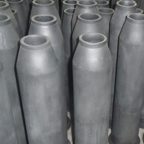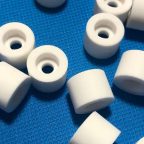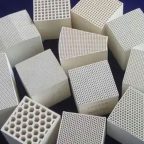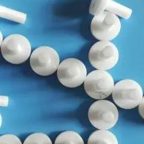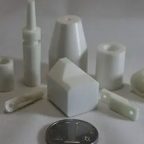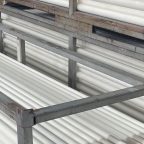Although the zirconia ceramics we are familiar with have excellent performance and high hardness, it will inevitably require very precise machining during machining. Next, the Pintejin ceramics manufacturer will introduce to you the finishing methods and attention of zirconia ceramics. point.
Finished zirconia ceramic tube
- Processing method of precision zirconia ceramic machining: Zirconia ceramic machining methods are commonly divided into two categories: mechanical machining, mold injection machining, etc. Among them, the mechanical machining method is highly efficient, so it is widely used in industry. Applications, especially diamond wheel grinding, lapping and polishing are common.
- Precautions for machining precision zirconia ceramic parts: Although there are many methods for machining precision zirconia ceramic parts, the machining cost is high, the machining efficiency is low, and the machining accuracy is poor. One of the main reasons for this is the very high hardness of ceramics.
For the unsintered or sintered zirconia ceramics, rough machining is mainly performed by cutting, and after sintering (the process of converting powdery materials into dense bodies), grinding is used for finishing.
Finished zirconia ceramic rod Depending on the situation of zirconia ceramics, the sintered body can be directly ground and processed to achieve the design accuracy (precision) without machining. As far as the machining process is concerned: zirconia ceramics are almost similar to metal parts, but the machining allowance of precision zirconia ceramics is much larger.
During rough machining of unsintered or sintered ceramics: the problem of insufficient strength or surface machining defects is prone to occur, or the required final machining shape cannot be obtained due to insufficient clamping and other reasons. Since the shrinkage cannot be kept uniform during sintering, it is necessary to make the size not too close to the final size during rough machining, so there is a large allowance for finishing. For metal machining, the finishing allowance should be a few percent of millimeters as far as possible, considering the black skin caused by thermal deformation and heat treatment. For ceramic machining, the finishing allowance needs to be a few millimeters or even a dozen millimeters.
The machining allowance is large, the productivity is reduced, and the production cost is increased. Another problem of machining precision zirconia ceramic parts is that the cost of machining tools is high, and high-priced sintering (the process of converting powder materials into dense bodies) diamond and CBN tools is required for cutting, and diamond grinding wheels are used for finishing. Therefore, The cost of tools is dozens to hundreds of times higher than those used in metal cutting.
The strength of zirconia ceramics is sensitive to machining conditions (sensitive), and it is difficult to achieve high-efficiency machining, so the machining cost of zirconia ceramics is much higher than that of ordinary materials. Pintejin Ceramics is a professional manufacturer of industrial ceramics, mainly engaged in the research and development and production of zirconia ceramics and alumina ceramics. We can process ceramic products according to your drawings, specializing in the production of high-precision ceramic rods, ceramic tubes, ceramic rings, ceramic plates, ceramic flanges, ceramic nozzles, and customized precision ceramic parts, etc.
Pintejin machining ceramic service include : Alumina Ceramic Parts, Zirconia Ceramic, Silicon Carbide Ceramic, CNC Machined Aluminum Nitride Ceramic, Machinable Ceramic Parts, Glass Ceramic,Macor Ceramic,Powder Metallurgy Dies,Ceramic Injection Molding,Ceramic Dry Pressing,Ceramic Extrusion Dies
